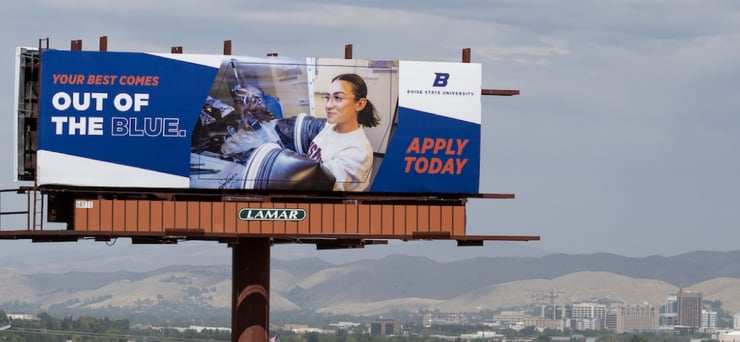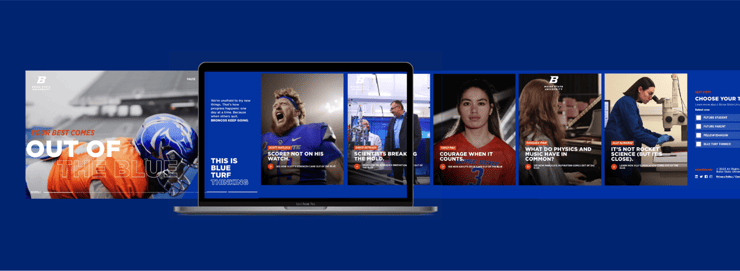In 15 years as a higher ed professional, I've been inspired by and privileged to tell stories of transformational experiences for students, faculty, and the communities served by the colleges and universities I've worked for.
One example that sticks out is Street Medicine Detroit, a student organization at Wayne State University where medical students take the knowledge they learn in the classroom to the streets of Detroit to provide medical services to the city's unhoused population. These students' work provides critical care for those who may not have access to healthcare resources, feel unwelcome, or even weary of medical facilities. It also provides students with valuable real-world experience where they learn to relate to their patients and provide basic medical care. It was inspiring to hear from these students and know their efforts were helping to make Detroiters healthier, all while they gained the knowledge needed to practice medicine in communities around the country after graduation.
Higher ed institutions have no shortage of stories about amazing initiatives like Street Medicine Detroit. They happen across all disciplines and at all institutions, big and small. At SimpsonScarborough, we see firsthand that the good work colleges and universities do is endless.
But there's a disconnect in higher ed that's hard to understand. Our recent Alumni Philanthropy Study surveyed more than 1,000 college graduates about their attitudes toward higher ed and giving habits. 67% of these individuals have not given to their alma mater, while many of the same respondents (74%, to be exact) do give to other causes. When asked what inspires their giving, "supporting a mission that is meaningful to me" tops the list. But astonishingly, only 19% of alum say higher education is a giving priority.
How do we reconcile that alum—arguably a group that should "get it" because their own college experiences have directly impacted them—don't see higher ed's mission as a cause worthy of support? And if they aren't inspired by the mission to give, how can we expect those with less connection to higher ed to see it as worthy of investment?
As marketing and communications professionals, we must recognize that higher ed's mission isn't resonating. And to solve this problem, we need to take a deeper look at how we share our mission and how it is achieved on college campuses every day.
Vague and Exclusionary
The core principles of our institutional missions are important and far-reaching, but how we articulate them is often esoteric.
Raise your hand if your institution's mission statement includes any of the following phrases:
- academic excellence
- innovation
- engagement
- advancing knowledge
What do these phrases really mean? These big concepts aren't always clearly articulated and understood within our institutions. What does innovation mean at your school? What does it look like? How else might you describe it? These are questions we need to align on internally to effectively message them externally to prospects, parents, alum, and friends.
In our Alumni Philanthropy Study, alum identified causes including children and family services, animal welfare, food pantries, and poverty and homeless initiatives among the top causes they support. Higher ed can learn from how these missions are expressed by looking at some of the top U.S. nonprofit organizations in these categories.
Feeding America provides "access to nutritious food for all." St. Jude Children's Center "advances cures, and means of prevention, for pediatric catastrophic diseases." And Habitat for Humanity "brings people together to build homes, communities and hope."
These organizations lay out the "what" in their missions using language accessible to everyone. We know, for example, that the disease research St. Jude supports is complex, but how it's described is easy to understand. They're helping find cures for childhood diseases. And these missions use humanizing language like "nutritious," "catastrophic," and "hope" to provide context for what they do in a way that evokes emotion.
Now you might argue that the institutions I called out are more singularly focused, and thus, it's easier to understand their missions, and that's a valid point. But even so, we can learn from them that using accessible yet evocative language, more straightforward terminology, and outlining the context needed to understand abstract concepts and phrases helps everyone understand what an organization is all about.
I'm not saying we need to throw out our institutional mission statements and begin again (or maybe I am?), but what we should do as marcom professionals is lead the charge to get internal agreement on what the tenants of our missions mean and how we can message them in more accessible ways in our marketing and communications efforts.
Drawing Clearer Connections
There's dissonance between higher ed's role in addressing big societal challenges and the perception of what higher ed does in this space. When respondents in the Alumni Philanthropy Study were asked what would motivate them to give to their alma mater top answers included:
- "Clear understanding of how my gift would be used."
- "Offering opportunities to support specific programs and initiatives."
- "Showing how donations enable my alma mater to impact society positively."
Boise State University has seen the benefits of developing content that more clearly links research to its direct impact on Idahoans. In 2022, they created a state-wide campaign focused on agricultural research related to potatoes. What I affectionately call "the potato chip research" showed how complex scientific scholarship has real-world benefits for Idaho farmers' largest cash crop. Boise State amplified this story through its website, paid social, out-of-home placements, and even clever activations like branded bags of potato chips and information on the research at various events.
"Like all national research universities, our faculty at Boise State have a portfolio of one extraordinary project after the next," says Lauren Griswold, Chief Communications and Marketing Officer. "We've made it our marcom team's mission to take this incredible work — creating a healthier potato chip, unlocking the sagebrush genome, beaver restoration in rivers, and the science behind wildfire smoke — and share stories that deeply connect to Idahoans. Universities that are more interested in marketing the prestige of the research versus the direct impact on their communities are missing the mark."
"As an industry, we must dig deeper to draw connections with our audiences if we want to drive results and improve positive sentiment in the value proposition of higher education."
- Lauren Griswold
The potato chip research is a great example of how one story can show a somewhat amorphous topic (like research excellence) in a specific, relatable, and meaningful way to target audiences. Colleges and universities have a well full of these initiatives that show how our missions are lived out on campus daily.
So, What Do We Do?
Changing perceptions doesn't happen overnight, but marketing and communications professionals can begin to move the needle on higher ed's mission problem in several ways.
As strategic leaders of their institutions, CMOs can work to build consensus with their presidents and other administrative leaders on what our missions mean. And marcom teams can develop strategies for messaging the core ideas of our missions in ways that eliminate barriers to understanding. Finally, we can show how colleges and universities bring missions to life with storytelling that connects the work on campus and how it directly impacts the communities we want to support us.
With these efforts, we can show that higher ed's mission is anything but a problem.
__
Savannah serves as an Account Director at SimpsonScarborough, where she works closely with our teams in the creation of thoughtful and impactful work for colleges and universities across the country. She lives in Detroit with her husband and cats. She is a big pop culture buff and has a soft spot for costume dramas and historical fiction books.
To learn more about Savannah and the rest of our team, visit our culture page.











